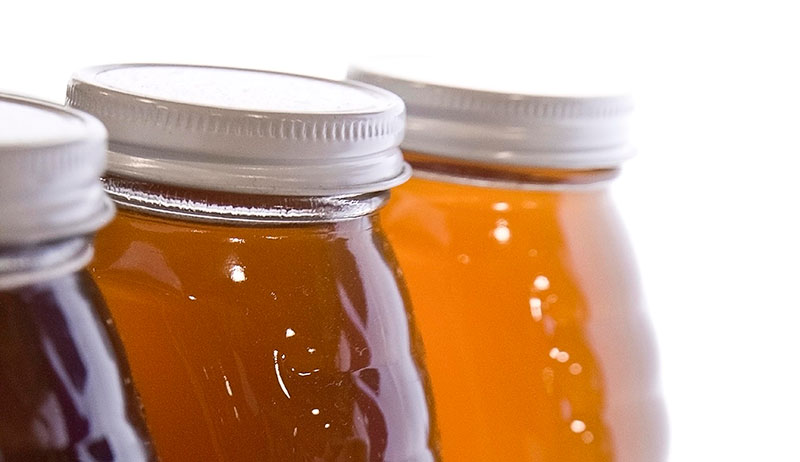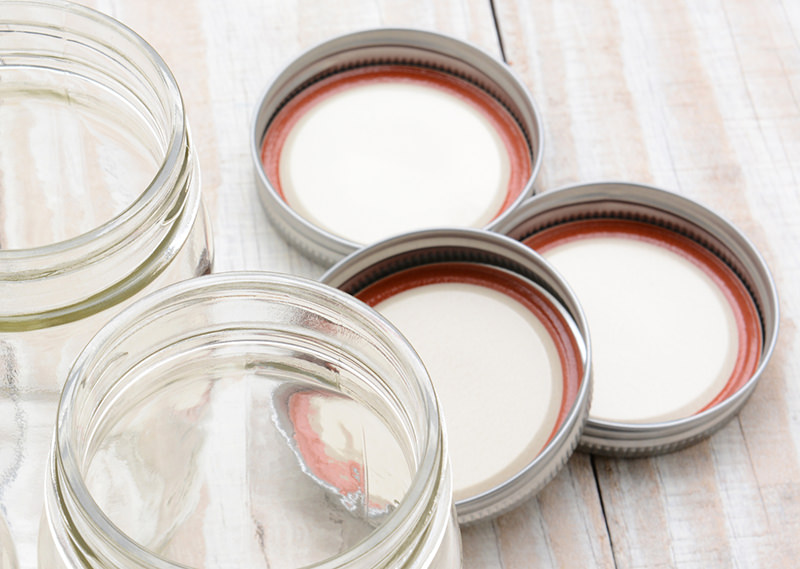
It happens to every home canner once word of your preservation avocation spreads: Extra produce begins to appear. The neighbor with the huge rhubarb patch starts hanging bags of it on your fence posts. You glean bushels of fruit (with permission, of course) from the untended plum trees down the street, and that peach tree that hardly blossomed at all last year is loaded with fragrant orbs.
These harvests can go a long way toward filling the larder for the lean months of winter, but they can cause a bit of panic for the unprepared. Let’s face it: While canning is immensely satisfying, it can also be a ton of work, especially in large amounts—not to mention it has changed a lot over time. To avoid the panic and chaos that ensue from a plentiful harvest, here are 10 items to keep on hand so your canning tool kit is stocked and at the ready, giving you most everything needed to fill your shelves with a variety of homemade goodness.
1. Vinegars

Vinegars are good for canning pickles, chutney, ketchup and more. At a minimum, you should keep large bottles of white vinegar and apple-cider vinegar on hand, but white-wine, champagne and even balsamic vinegars can make for interesting combinations and exotic flavors. For canning safety, check labels to ensure all vinegars are at least 5 percent acidity to maintain acidity levels high enough for safe water-bath processing. Keeping a variety of bottles on your shelves will ensure you have whatever type you need—be it for champagne ketchup, berry-balsamic jam or bread-and-butter pickles.
2. Salts
Most home-canning recipes recommend using canning and pickling salt, as the measurements are based on the salt’s weight. Keep a box on your shelf at all times, and buy a new one when the old box gets low—never run out if you can help it. Other salts, such as sea salt, kosher salt and even table salt, might come in handy for fermenting, dehydrating, smoking and other food-preservation methods.
3. Sweeteners

Whether you’re canning fruits in sugar syrup, making sweet pickles or jamming, sweeteners are an integral part of many canning processes. Keeping a variety of sweeteners, including brown sugar, white sugar and honey, stocked on pantry shelves can provide for just about any project that comes your way. Look for sales around Christmas and other baking holidays for the best deals, checking use-by dates to ensure they aren’t close to expiration.
4. Spices
Fill your spice rack with sweet and savory choices, including the necessary ingredients for making your own pickling spice, as well as things such as cinnamon and cloves for fruit butters. Maintain a cache of whole and ground spices; they serve different purposes and can be used for a variety of delicious outcomes.
5. Pectin
Jams and jellies can be made without pectin, but the cooking times tend to be longer. Commercial pectin keeps life simple when you’re pressed with a bounty of fruit that might just be on the verge of going bad. You can also make your own pectin and can it for future use. Keep a variety of pectins, such as regular, liquid and low-sugar, at the ready to account for any recipe you might want to jam up. If you’re thinking about canning pie fillings or thickened soups, you might want to stock up on ClearJel, a modified-cornstarch thickener.
6. Liquors
Even if you’re not inclined to keep a full liquor cabinet, a few choice bottles can enhance many canning projects. Brandy, rum and a few liqueurs, such as cinnamon and orange, can add a bit of pep to jams and jellies—the alcohol cooks out, but the flavor remains. Peaches and cherries are delightful canned in a bit of brandy, citrus works well with rum, cinnamon liqueur peps up apple butter, and orange liqueur complements rhubarb. Jars of infused jam make for lovely gifts, too—especially when presented with a homemade pound cake to serve as a vehicle for the fruit-based spread.
7. Canning Equipment

Have your equipment ready and prepared well ahead of time. Canning equipment doesn’t have to be expensive or fancy—water-bath and pressure canners are the most basic requirements, but jar lifters and racks also come in handy. Be sure that all equipment you use regularly is in good working order. Replace gaskets on pressure canners as needed, and check the gauge for accuracy. Also, watch for sales and deals on equipment you’d like to have, such as steam juicers and sieves.
8. Jars of Various Size
Before canning season gets into full swing, organize your jars, keeping similar jar and mouth sizes together. This makes long sessions a bit easier because you’ll be able to grab extra jars during the canning process without having to sort through them for the proper size. Keep wide- and regular-mouth jars on hand, and take a moment to inspect jars for chips or cracks, removing damaged ones from your supply.
9. Jar Lids and Rings
It seems obvious, but many a canning adventure has been put on hold mid-project to run to the grocery store for lids, only to find them temporarily out of stock in the height of food-preservation season. Harriet Fasenfest, author of A Householder’s Guide to the Universe (Tin House Books, 2010), suggests keeping lids and rings in close proximity and in large supply. “I buy lots of lids at the beginning of the season or later in the year when they go on sale,” she says. Follow her lead and buy lids in the off-season, searching out deals in Amish stores and online retailers that sell in bulk.
10. Canning Books
A good reference book is necessary; choose something with up-to-date processing times. Granted, much information can be found online, but sometimes having a book at the ready is easier than navigating internet search results when you’re pressed for time. Plus, it never hurts to have a recipe collection or two for inspiration; the Ball Blue Book Guide to Preserving (Altrista Consumer Products, 2004) is a reliable resource, as is the National Center for Home Food Preservation.
Now that you have your supplies organized and ready, you’ll be able to tackle whatever produce windfall comes your way without breaking a sweat—well, at least not from lack of preparation.




